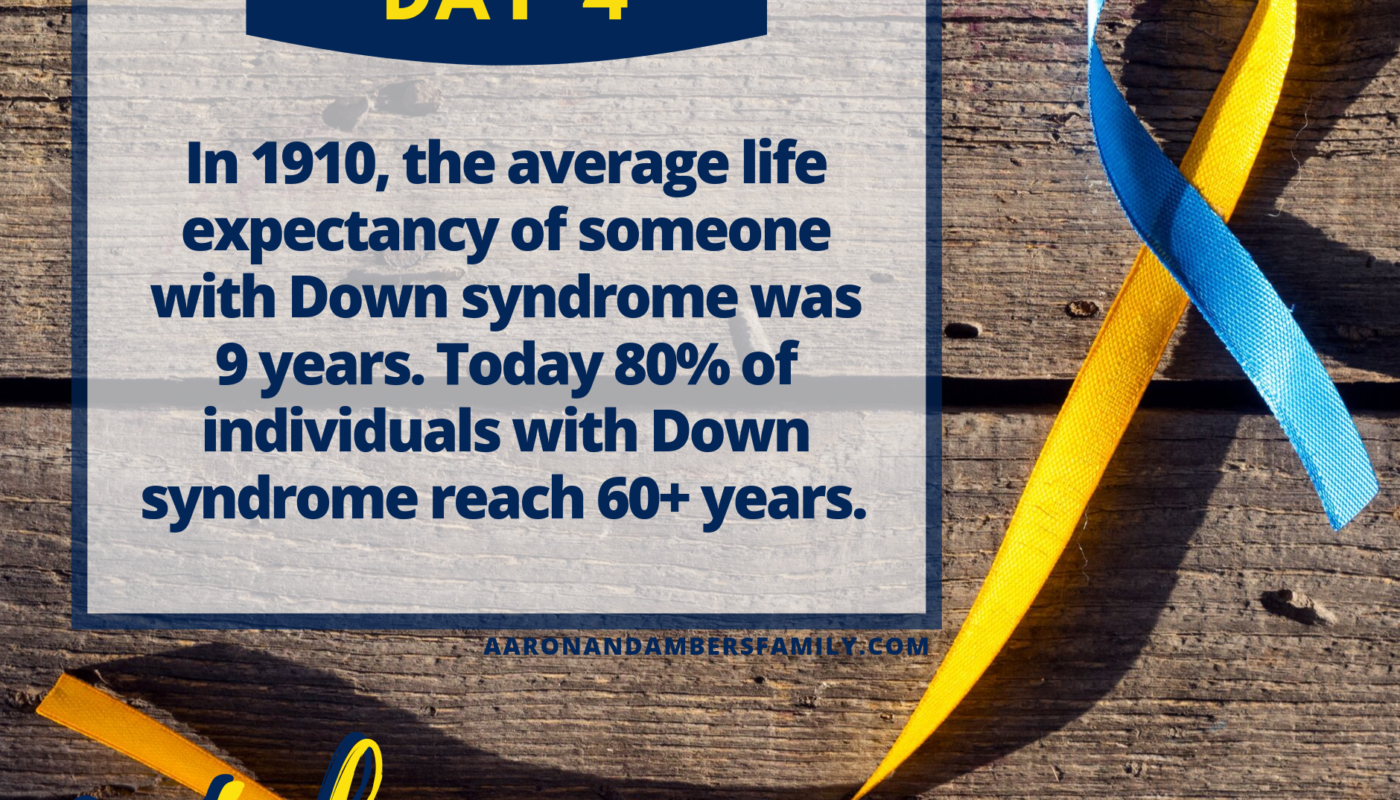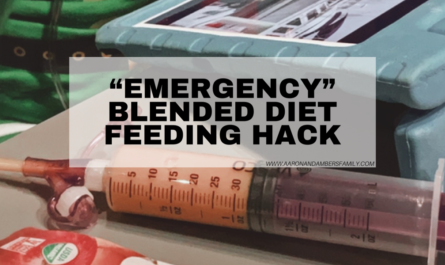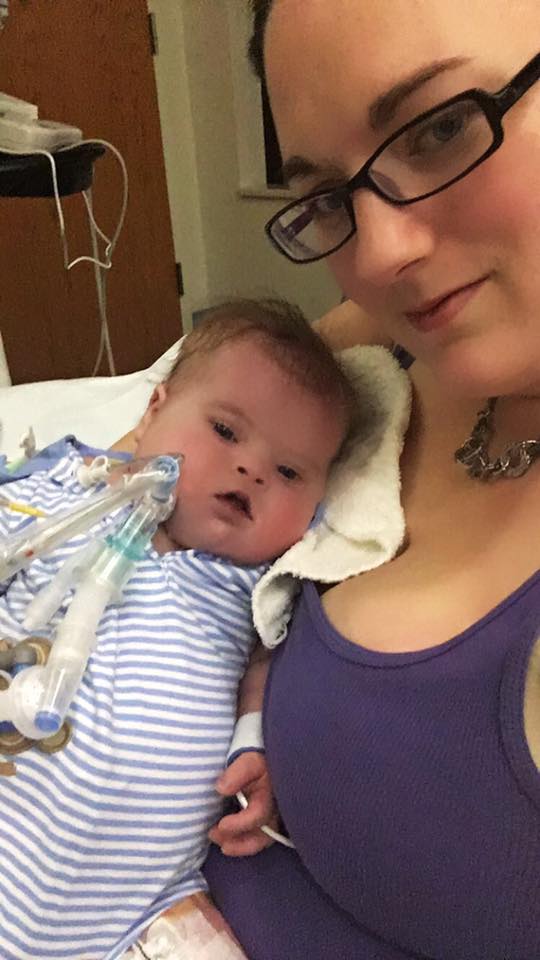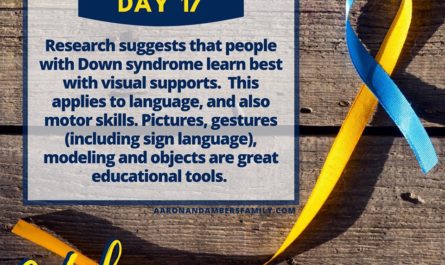I knew that medical advances had come a very long way, for all of us, but I didn’t realize they had come this far.
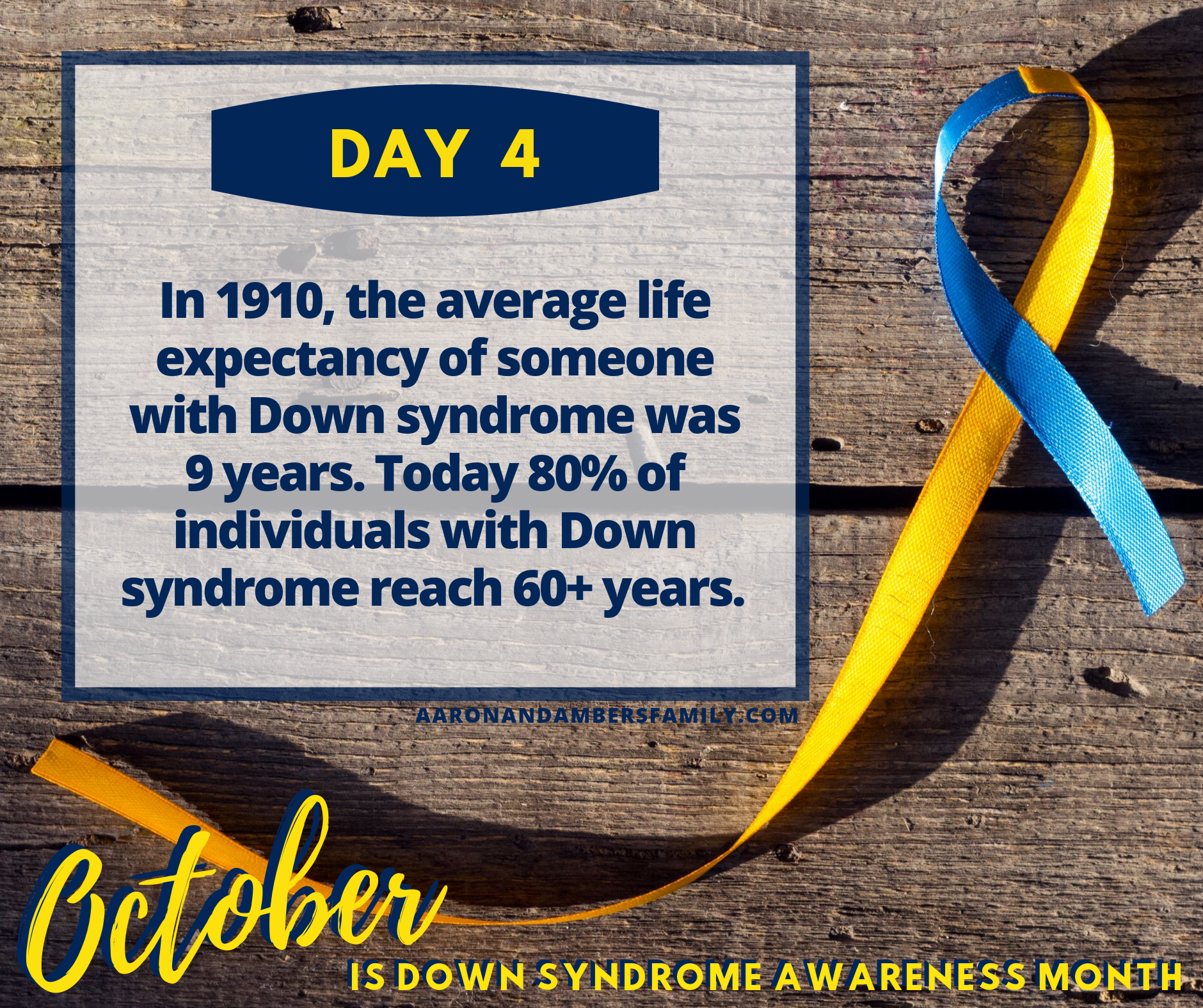
A century ago, a child with Down syndrome would typically only reach 9 years of age. Today, the average life expectancy is over six times that. Children born in the 1960’s are still alive today.
That’s a huge change from children being born in 1901 and living until 1910.
These changes are possible because of research. Changes in care. Changes in perspective. Awareness. Education. Advocacy. The more we know about Down syndrome, the better able we as a community are able to support people who have it.
I had no idea how ugly the history of Down syndrome was, nor that the US themselves had a eugenics movement until after a became a parent of a child with Down syndrome myself.
In early history, people with Down syndrome were often institutionalized along side the mentally ill in asylums, sometimes even against the wishes of their parents.
It wasn’t until the late 1940’s and 1950’s that things started to change. President Kennedy started movements to deinstitutionalize disabled people. Support organizations for persons with mental and physical disabilities began to form, including the first support group for families of children with Down syndrome in 1963 (now known as National Association for Down Syndrome).
The 1960’s and 1970’s had more forward movement, but things weren’t always pretty. In 1981 a newborn with Down syndrome (“Baby Doe”) died from starvation as their parents and disability advocates fought for a surgery to unblock their esophagus. This later turned into a Supreme Court case in 1984. Up until that point, most doctors in the United States had continued to refuse to provide any lifesaving procedures for people with Down syndrome.
There’s more, of course, and if you want a deeper dive into the history, the Global Down Syndrome Foundation has a very insightful timeline.
It’s no wonder that the life expectancy for someone with Down syndrome has changed so drastically. Sure some of this was medical advancements, but there has also been a very large shift in perception and compassion.
Unfortunately, work in this area isn’t done yet.
Even still today, people with Down syndrome struggle to receive procedures such as organ transplants. Life saving surgeries that are seen as higher risk are still often declined in some hospitals. We even experienced this when AJ was first born and we were told that they were unwilling to perform the surgery he needed at our local hospital. Had we not advocated for a second opinion, AJ would not still be here today.
Yes, we have come a long way, but there is certainly still work to be done.
This is why awareness, education, and integration are so important to us today.
This is why we’re so open with the things we experience with AJ.
This is why we moved to sharing our content on a public platform.
This is why we’re as passionate as we are.

